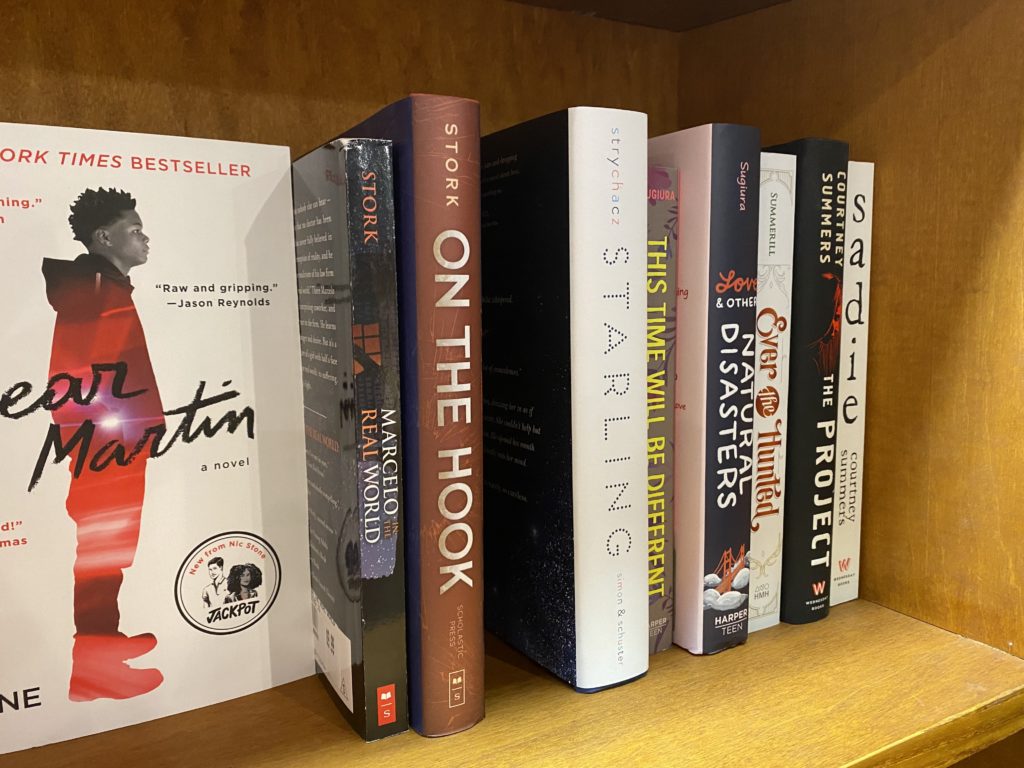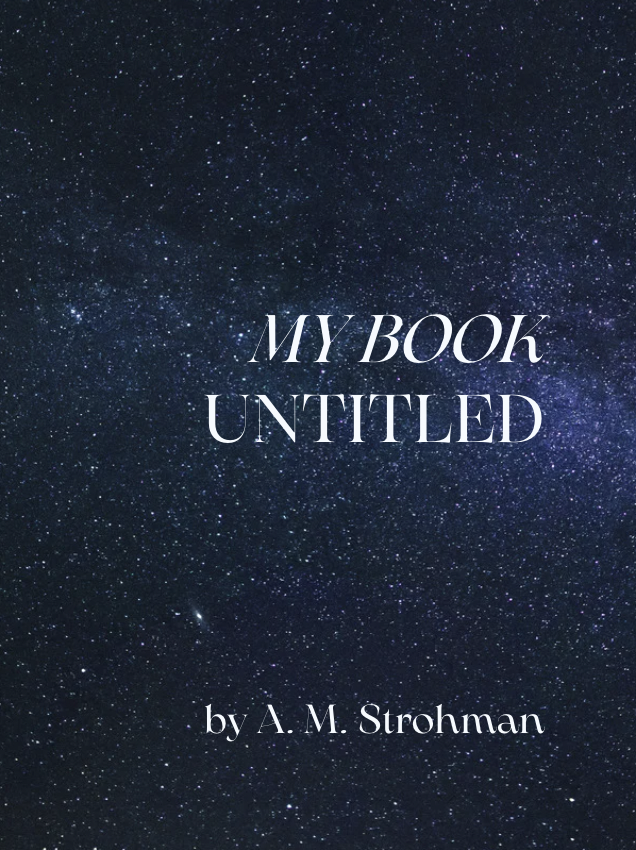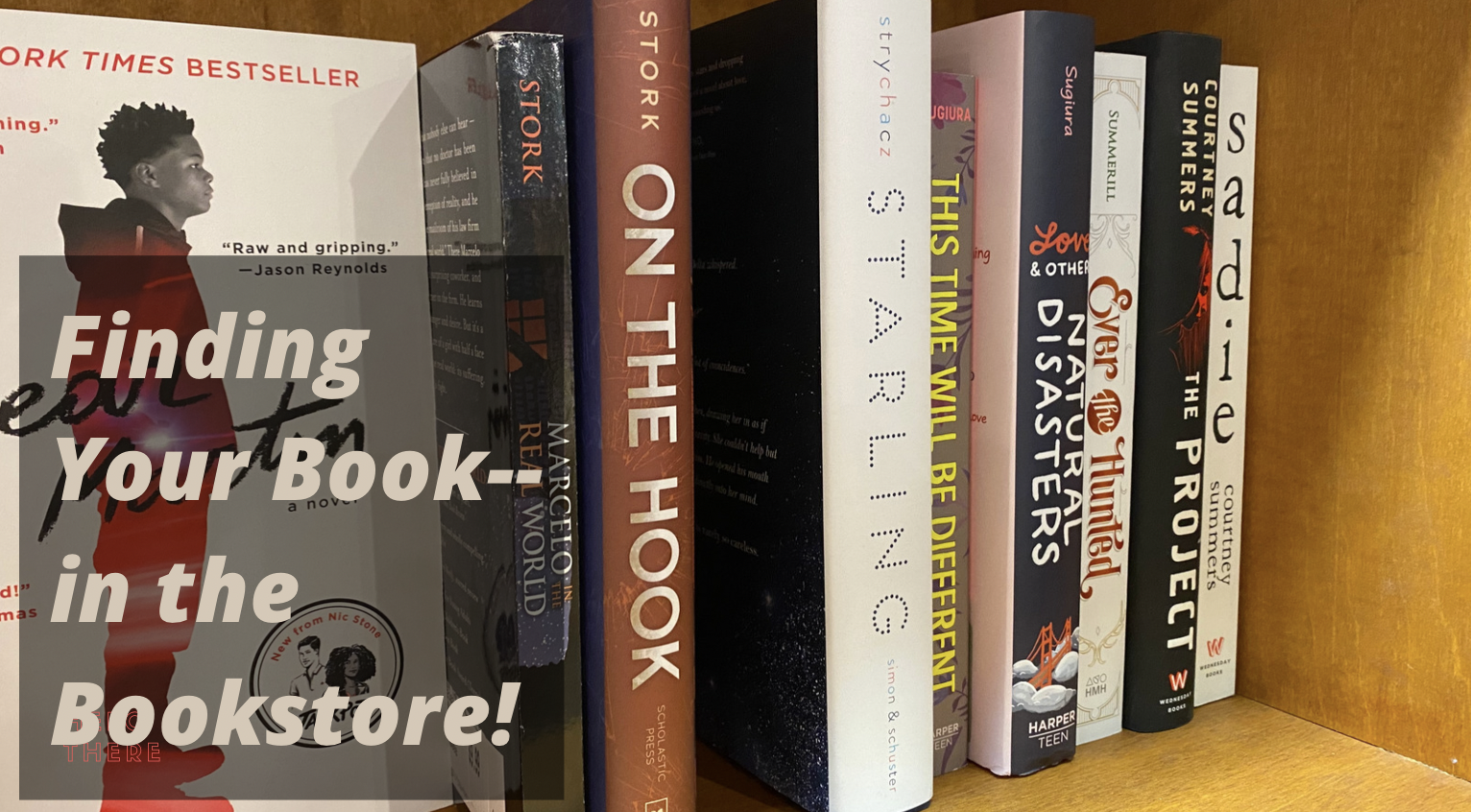by Anne-Marie Strohman
When I was working my way through The Last Draft by Sandra Scofield last summer, I happened across an exercise that I found incredibly helpful: finding where your book would be in a bookstore.
It’s not simply about envisioning your and your book’s future, but it’s also about finding books yours might have coffee with or introduce to friends.
Finding Your Spot on the Shelf
When you’re writing for children, most of the time books in the library or bookstore are simply grouped by category: picture books, chapter books, middle grade, young adult. Graphic novels may be in a separate section by category as well.
Just for fun, find your spot on the shelf. Mine’s here, at my local bookstore, between On the Hook by Francisco X. Stork and Starling by Isabel Strychacz.

Envisioning a future where your book will be a real book on a real shelf in a real bookstore can be motivating!
But beware of just thinking of all the glory. This exercise can have much more practical relevance to your work.
Finding Your Spot in the Galaxy of Books
Think about how adult books are shelved. There’s general fiction, which might include classics, literary fiction, rom coms, chick lit, etc. There’s sci-fi/fantasy. Mysteries. Thrillers. Non-fiction, which can be separated by topic categories.
Now consider if the children’s section was shelved that way. Where would your book be?
I’m working on a YA book, so I went to one of the YA displays, where all the book covers are facing out. As I looked at the books, I asked myself which covers looked like ones I thought my book might have.
I didn’t think too hard. I just pulled out books with covers that drew my attention and gave me the feeling I want my book to have. Then I noted down the book titles for future reference.
Defining Your Book
You might already know that your book is a YA thriller, but looking at the covers of YA thrillers might help you get even more specific about where your book fits.
In my case, I didn’t find a clear genre. The books I chose were all on the literary side. Many had Printz awards or Printz honors. They all were character driven, with strong plots. They all were weird in some way.

Knowing that helped me think more clearly about my revision. When I’m faced with a choice, I can consider what would sit well in the spot I found for it. Right now my draft is non-linear, but I had been considering shifting it to a more linear structure. Should I? A lot of the books I found took risks with structure, and this made me more inclined to keep non-linear elements (as long as they serve the story).
Materializing Your Book

I love how this place-finding exercise uses concrete objects to help with the thought work that goes into revision. And it reminded me of another exercise I used when I was writing my dissertation: making your book into a book.
When I’m dealing with words on a screen, it’s easy not to see the enormity of what I’ve accomplished. So after each completed draft, I print it out. (I do like to work from a hard copy for some parts of revision.)
But the trick isn’t just in the printing, though that big stack of papers does help me feel like I’ve accomplished something. It’s turning those papers into a book, no matter how rudimentary. I put mine in a three-ring binder, and then I add a cover. It doesn’t need to be anything fancy, it just needs to state that this is a book with a title, written by YOU.
It can help make the abstract word count on Scrivener feel that much closer to a real book.
And that feeling is motivating.
Now it’s YOUR turn!
- Visit a brick-and-mortar bookstore or a library.
- Find where your book would fit on the shelf. Take a photo!
- Find book covers that draw your attention and give you the feeling you want your book to have. Take some photos! (Or at least note down the authors and titles.)
- Spend some time defining what those books have in common. Identify the genre and more specific characteristics.
- Print out your draft and turn it into a book, complete with a cover.
Check out these author interviews to find their revision tips!
Composing Words: A Q&A with Erica George, author of the YA novel Words Composed of Sea and Sky
Feminist, Funny, and Fierce: A Q&A with Emma Kress, author of the YA novel Dangerous Play
Anne-Marie Strohman (co-editor) writes picture books, middle grade novels, and young adult short stories and novels. She is trained as a teacher, an editor, and a scholar, specializing in Renaissance Literature. She holds an MFA in Writing for Children and Young Adults from Vermont College of Fine Arts and is an active member of SCBWI. Find her at amstrohman.com and on Twitter @amstrwriter.

COMMENTs:
0